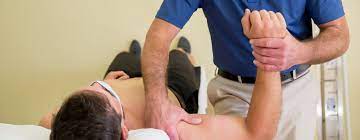Understanding Adult Brachial Plexus Injury: Navigating the Road to Recovery
The brachial plexus injuries can be a life-altering condition, often resulting from trauma or injury to the network of nerves that control the muscles of the shoulder, arm, and hand. Coping with the physical and emotional impact of BPI requires resilience and a comprehensive approach to rehabilitation.
Recovery from Adult Brachial Plexus Injury involves a multi-faceted strategy that begins with a thorough assessment of the extent of nerve damage. Understanding the specific nerves affected and the severity of the injury is crucial for tailoring a personalized treatment plan. In many cases, a combination of physical therapy, occupational therapy, and, in severe cases, surgical intervention may be recommended to restore function and mobility.

Rehabilitation plays a pivotal role in the recovery process for individuals with Adult Brachial Plexus Injury. Physical therapy focuses on strengthening muscles, improving range of motion, and retraining the affected limb. Occupational therapy, on the other hand, aims to enhance daily living skills and adapt to the challenges posed by the injury.
Patience is a virtue during the rehabilitation journey. Progress may be gradual, and setbacks are not uncommon. It’s essential to recognize and celebrate small victories along the way. Emotional support and counseling can also be integral components of the recovery process, helping individuals cope with the psychological impact of adapting to a changed physical condition.
In conclusion, navigating recovery from Adult Brachial Plexus Injury requires a holistic and individualized approach. From understanding the intricacies of the injury to embracing the challenges of rehabilitation, the journey is a testament to the strength of the human spirit. With perseverance, support, and a well-rounded treatment plan, individuals can regain a sense of normalcy and rediscover their capabilities post-injury.
